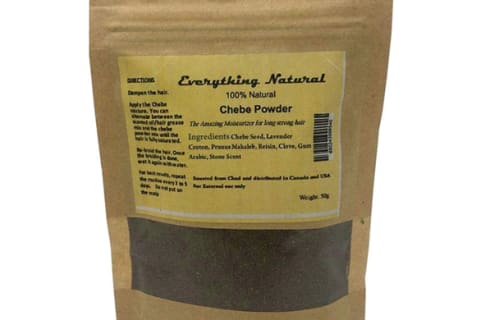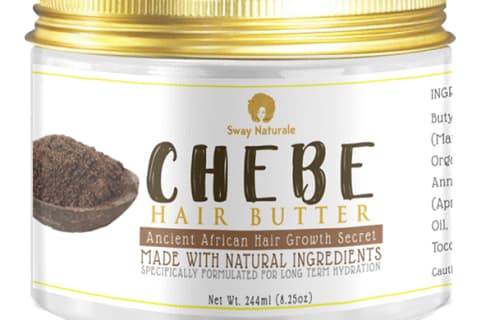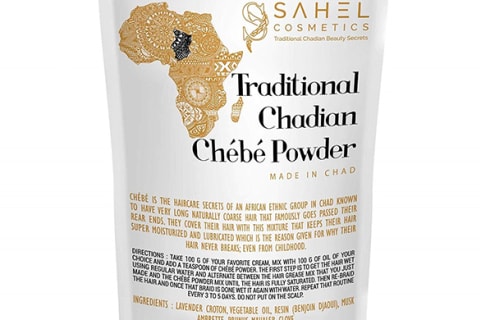Ahead, find everything you need to know about chebe powder: the history, the benefits, and how to use it correctly. As for what comprises the powder itself? “It’s not a single ingredient—it’s actually a mix of ingredients,” says chemist Christine Martey-Ochola, Ph.D., co-founder of NUELE. Specifically, the powder will contain some combination of croton, mahllaba, cloves, and missic (to give it a nice aroma). Seeds from each plant are harvested, dried, and then ground into a fine powder you can use as a base for leave-ins and hair masks. We should note that if you do use chebe powder on the scalp, you’ll want to thoroughly rinse it out after scrubbing—you don’t want to let it build up on the follicles. The mixture is super thick and clings to the strands, which is why Martey-Ochola suggests skipping the product if you have fine, fragile locks: “If someone has hair that is very thin or they have follicles that are not very strong, it can [potentially] lead to loss of hair,” she says. “It’s really important to think about your hair texture.” As for which oils to combine with the powder, you can choose your own adventure: olive, almond, jojoba, et al. Although, you might want to avoid coconut oil for this mixture: “I think that might make it way too heavy,” Martey-Ochola notes. Other than that, it’s generally safe to use on the hair; although, you might want to patch-test before applying to make sure you don’t have any allergies or sensitivities to the ingredients.





